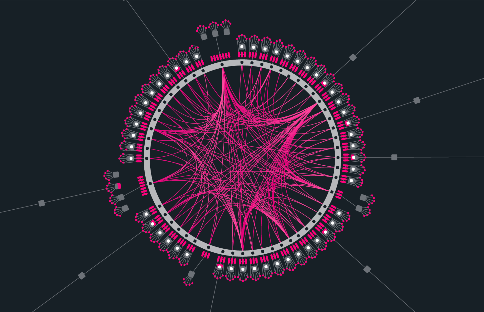
Intermediate
Runtime Upgrades on Polkadot Network
This tutorial provides an introduction to runtime upgrades in Polkadot, which allow the blockchain to change its logic without the need for a hard fork. Instead of encoding the runtime in nodes, the nodes in Polkadot contain a WebAssembly execution host and maintain consensus on a low-level instruction set, while the runtime is stored on the blockchain itself. Stakeholders can propose and approve upgrades through the on-chain governance system, which will enact them automatically. For validators and infrastructure providers, it’s important to keep in sync with the network and follow the Polkadot releases, while monitoring the chain for upcoming upgrades and changes. For nominators, runtime upgrades don’t require any action, but it’s recommended to keep up-to-date and participate in the latest upgrades. The client release notes include the hashes of any proposals related to upgrades, and users can monitor the chain for events related to the referenda, or monitor Polkassembly for discussions on proposals.
Forkless Upgrades
You may have come across the term “hard fork” before in the blockchain space. A hard fork occurs when a blockchain’s logic changes such that nodes that do not include the new changes will not be able to remain in consensus with nodes that do. Such changes are backward incompatible. Hard forks can be political due to the nature of the upgrades, as well as logistically onerous due to the number (potentially thousands) of nodes in the network that need to upgrade their software.
Rather than encode the runtime (a chain’s “business logic”) in the nodes, Polkadot nodes contain a WebAssembly execution host. They maintain consensus on a very low level and well-established instruction set. The Polkadot runtime is stored on the Polkadot blockchain itself.
As such, Polkadot can upgrade its runtime by upgrading the logic stored on-chain, and removes the coordination challenge of requiring thousands of node operators to upgrade in advance of a given block number. Polkadot stakeholders propose and approve upgrades through the on-chain governance system, which also enacts them autonomously.
New Client Releases
The existing runtime logic is followed to update the Wasm runtime stored on the blockchain to a new version. The upgrade is then included in the blockchain itself, meaning that all the nodes on the network execute it. Generally, there is no need to upgrade your nodes manually before the runtime upgrade as they will automatically start to follow the new logic of the chain. Nodes only need to be updated when the runtime requires new host functions or there is a change in networking or consensus.
Transactions constructed for a given runtime version will not work on later versions. Therefore, a transaction constructed based on a runtime version will not be valid in later runtime versions. If you don’t think you can submit a transaction before the upgrade, it is better to wait and construct it after the upgrade takes place.
Although upgrading your nodes is generally not necessary to follow an upgrade, we recommend following the Polkadot releases and upgrading promptly, especially for high priority or critical releases.
Runtime Upgrades for Various Users
For Infrastructure Providers
Infrastructure services include but are not limited to the following:
-
API services
-
Node-as-a-Service (NaaS)
-
General infrastructure management (e.g. block explorers, custodians)
For validators, keeping in sync with the network is key. At times, upgrades will require validators to upgrade their clients within a specific time frame, for example if a release includes breaking changes to networking. It is essential to check the release notes, starting with the upgrade priority and acting accordingly.
General infrastructure providers, aside from following the Polkadot releases and upgrading in a timely manner, should monitor changes to runtime events and auxiliary tooling, such as the Substrate API Sidecar.
Transactions constructed for runtime n will not work for any other runtime >n. If a runtime upgrade occurs before broadcasting a previously constructed transaction, you will need to reconstruct it with the appropriate runtime version and corresponding metadata.
For Nominators
Runtime upgrades don’t require any actions by a nominator, though it is always encouraged to keep up-to-date and participate with the latest runtime upgrade motions and releases, while keeping an eye on how the nodes on the network are reacting to a new upgrade.
Monitoring Changes
You can monitor the chain for upcoming upgrades. The client release notes include the hashes of any proposals related to any on-chain upgrades for easy matching. Monitor the chain for:
democracy(Started) events and log index and blockNumber. This event indicates that a referendum has started (although does not mean that it is a runtime upgrade). Get the referendum info*; it should have a status of Ongoing. Find the ending block number (end) and the enactment delay (delay). If the referendum passes, it will execute on block number end + delay.
democracy(Passed), democracy(NotPassed), or, democracy(Cancelled) events citing the index. If Passed, you need to look at the scheduler(Scheduled) event in the same block for the enactment block.
democracy(PreimageNoted) events with the same hash as the ReferendumInfoOf(index) item. This may be up to the last block before execution, but it will not work if this is missing.
democracy(Executed) events for actual execution. In the case of a runtime upgrade, there will also be a system(CodeUpdated) event.
You can also monitor Polkassembly for discussions on on-chain proposals and referenda.
E.g. via
pallets/democracy/storage/ReferendumInfoOf?key1=index&at=blockNumber on Sidecar.
